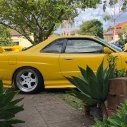Announcements
-
Similar Content
-
Latest Posts
-
Cheers guys for ideas, gives me something to think about. @PranK my local track has one hairpin turn and also street sprints I want to do have hairpin turns so a few.
-
By alex.typex · Posted
Hello everyone. Greetings from Spain to everyone. I am from the Canary Islands. I have a r33 gtst M type. I am fully involved in the project. In networks they know me as alex.typex. Youtube XXGarage. And I'm in the middle of programming my Apexi power fc. A pleasure to be part of this great community. Greetings. -
By Dose Pipe Sutututu · Posted
Because it's rubbish, it got progressively better with each generation but still rubbish when you're pushing the car on the track. Some like it, most hate it. -
Yeah, I presumed that the pic was of some other car, because of the F. Ikeya arms.
-






Recommended Posts
Create an account or sign in to comment
You need to be a member in order to leave a comment
Create an account
Sign up for a new account in our community. It's easy!
Register a new accountSign in
Already have an account? Sign in here.
Sign In Now